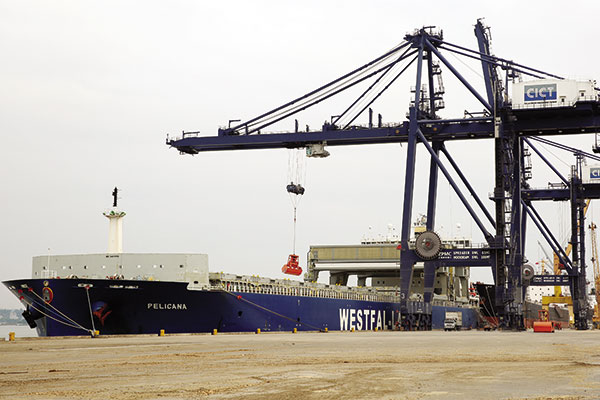Bucking the trend of seaport growth nationwide, joint venture ports between Vietnam National Shipping Lines and its foreign partners have suffered poor performances in container throughput in the year to date.
 |
| Three of Vinalines’ joint venture ports are suffering from poor performance, especially in regards to the competition |
According to the Vietnam Ports Association, the volume of containers shipped via ports in the northern region ascended 14 per cent year-on-year in this year’s first nine months.
However, such growth was not evident in ports managed by Vietnam National Shipping Lines (Vinalines) and its foreign partners. In one notable example, Cai Lan International Container Terminal (CICT) in the northeastern province of Quang Ninh - a joint venture port between Vinalines and the US-based Carrix/SSA - received no container throughput during the period. Such a situation has remained the same since 2015.
Meanwhile its rivals - the seaports Nam Hai Dinh Vu and Tan Cang 128 Haiphong - witnessed growth of 216 per cent and 26 per cent, respectively.
“Transport infrastructure to CICT has not been developed much, which has prevented it from linking with industrial parks and economic zones in the north, thus leading to high costs,” said a source from Japan’s Mitsui O.S.K. Lines.
For example, he told VIR that it costs up to VND7 million ($320) to transport goods to Cai Lan, double the cost of transport to Haiphong ports.
Other foreign joint venture ports with Vinalines have also had trouble attracting cargo. SSIT, a joint venture between Vinalines and Carrix/SSA in the Cai Mep-Thi Vai port area in the southern province of Ba Ria-Vung Tau, received no container throughput in this year’s first nine months. Meanwhile, other ports in the area witnessed a rise in container throughput of 37 per cent between January and September.
In another case, SP-PSA, a joint venture of Vinalines and Singaporean PSA in the Cai Mep-Thi Vai area, also saw container throughput in this year’s first nine months fall 96 per cent on-year. In the third quarter, the volume dropped 100 per cent year-on-year.
“In addition to costly services, lack of logistics services has made SSIT and SP-PSA less attractive than ports in Ho Chi Minh City. Moreover, the channel depth in these ports remains shallow, so that shipping lines want to call at ports in Ho Chi Minh City instead in those in the Cai Mep-Thi Vai,” said the Mitsui O.S.K. Lines source, who declined to be named.
In the year to date, just one out of four foreign joint venture ports with Vinalines reported good performance in container throughput. CMIT - a joint venture port between Vinalines and Danish company APMT - received nearly 166,000 containers in the third quarter of 2016, up 57 per cent year-on-year. The figure in the first nine months was nearly 470,340 containers, up 99 per cent year-on-year.
While many foreign joint venture ports in Cai Mep-Thi Vai reported poor performance, their rivals, domestic- and foreign-invested alike, enjoyed significant growth.
Tan Cang-Cai Mep International Terminal Co., Ltd. (TCIT), which has SNP and Mitsui O.S.K. Lines as partners, grew 25 per cent in the third quarter. Thanks to strong growth in recent times, TCIT achieved its biggest market share since 2015 in the Cai Mep area - a formidable 67 per cent.
Tan Cang Cai Mep-Thi Vai Terminal (TCTT) enjoyed an expansion of 156 per cent in the third quarter, and 152 per cent in the first three quarters.
In Ho Chi Minh City, Tan Cang-Hiep Phuoc and Tan Cang-Cat Lai ports saw respective rises of 51 and 10 per cent in this year’s third quarter, and 116 and 6 per cent in the nine months.
In an effort to facilitate future operations, many foreign joint venture ports, including SSIT and CMIT, in late October proposed the Ministry of Transport seek the government’s permission to dredge the channel depth in the area to 15.5 metres from the current 14 metres, to enable them to handle bigger vessels.
They also suggested the country not grant investment licences to new port projects in the Cai Mep-Thi Vai area at least for the period of 2016-2020, to facilitate a better supply-demand balance.